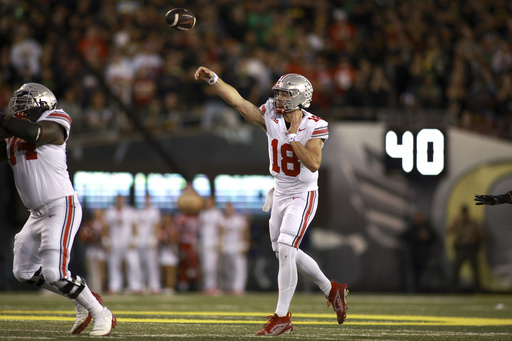
Oregon’s head coach, Dan Lanning, along with his extensive coaching team—now totaling 30—acknowledges that they devote substantial time to preparing for various game scenarios that might arise. While some situations they plan for materialize, others may not be needed immediately but are retained for critical moments. This was demonstrated dramatically in the closing seconds of a recent nail-biter against Ohio State.
When Ohio State was about to snap the ball with just 10 seconds left, questions arose about whether Lanning directed an extra player onto the field—a move that exceeded the allowed number of players. While Lanning has been coy about explicitly confirming or denying this action, he did indicate that it was a tactic they had practiced beforehand, noting, “You can see the result.”
The implications of this moment were not limited to just the game’s outcome of 32-31; it also caught the attention of Steve Shaw, who serves as the NCAA’s national coordinator of football officials. Even before the incident with Ohio State’s final seconds went viral, Shaw’s team was already proactive in addressing the situation. By midweek, the rules committee had clarified a rule allowing the game clock to be reset to the time shown at the snap if a defensive team commits an illegal substitution.
This interpretation marked the fourth in-season update made by Shaw this year, which he humorously referred to as a “world record” since he began his tenure in 2020. While many updates go largely unnoticed, this particular change drew attention due to the high stakes surrounding the game.
Historically, teams have sifted through the rulebook to identify legal loopholes. Debates regarding whether Oregon’s tactics constituted “cheating” or merely “gamesmanship” are ongoing, a discussion reminiscent of debates in sports that have likely been occurring for centuries. Shaw believes that as coaching staffs continue to grow and reliance on analytics increases, coaches will become even more creative in their strategies, driving the need for regulations to adapt accordingly.
Earlier instances highlight this trend. For example, during a game in 2018, California’s football team employed deliberate penalties to stave off a late-game comeback by North Carolina, leading to rule adjustments addressing defensive holding.
Additionally, a historical tactic in basketball involved fouling players like Shaquille O’Neal away from the ball due to his poor free-throw shooting performance. Similarly, in the NHL during the 1980s, the Edmonton Oilers engaged in clever strategies that led to rules changes intended to eliminate advantages gained from coincidental penalties.
In football, outrageous antics have also made headlines. The late Buddy Ryan once sent out 14 players during a crucial moment of a game, exploiting a loophole before officials caught on to this tactic, prompting changes to the rules.
Sports have repeatedly demonstrated that teams will look for opportunities to bend the rules to their advantage. The infamous ‘Disgrace of Gijon’ from the 1982 World Cup serves as a reminder of how far teams will go to secure a favorable outcome, a lesson still felt in sporting regulations today.
As these examples illustrate, the landscape of sports is ever-evolving, with teams and officials continuously adapting to the creativity and cunning of competitors on the field and court.
